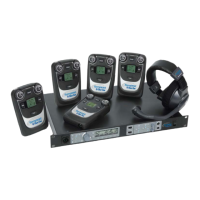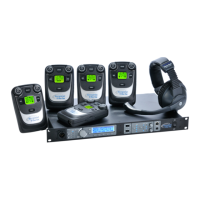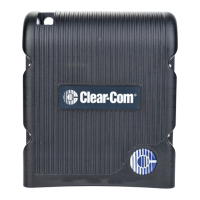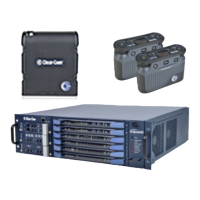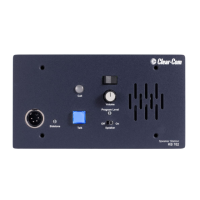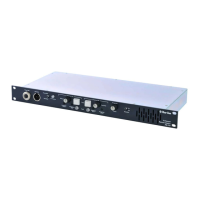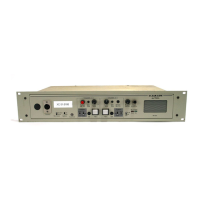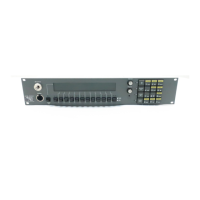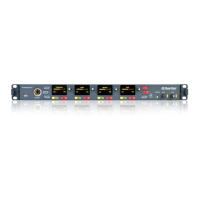8 Tempest®900 4-Channel Wireless Intercom System
Theory of Operaon
Tempest is a DSP (Digital Signal Processor) based, full duplex, wireless intercom system. It is a digital, point-to-point
communicaons system, operang in 26 MHz of spectrum in the 900MHz frequency band. This band allows users to
operate with no license requirements in most locaons.
The 900MHz band oers many benets. There are, however, a wide variety of technologies and users compeng for clear
spectrum in this limited band. Tempest ulizes patented and proprietary technologies to ensure a robust and reliable RF
link under a wide variety of physical and RF environments. This level of reliability is the most important aribute of any
wireless system.
Tempest ulizes proprietary, Frequency Hopping Spread Spectrum (FHSS) technology that has seven U.S. patents. Mulple
BeltStaon access is achieved by implemenng Time Domain Mulple Access (TDMA) with Frequency Shi Keying (FSK)
modulaon. Tempest uses an Algebraic Code - Excited Linear Predicon (A-CELP) voice compression algorithm to reduce the
bandwidth necessary for transmission and yet maintain the highest possible voice intelligibility. In addion, this algorithm
ulizes advanced lost packet masking technology, which greatly reduces the aect of packet loss, possible in all Digital RF
transmission schemes. The loss of audio packets is managed by the algorithm to reduce the possibility of detecng a loss
of audio.
The incorporaon of various diversity techniques provide an RF system that is robust and reliable under greatly varying
operaonal condions. Because of this inherent design, Tempest delivers superior operaonal range and greater levels of
interference and mul path fade rejecon. Covering extremely large areas or mulple coverage locaons can be problemac
with tradional wireless intercom systems. Tempest ulizes iSelect™ on-command roaming to allow users to move from
one area of coverage to another. iSelect allows Tempest users to easily choose the desired coverage area by selecng
the BaseStaon they want to communicate through. The BeltStaon (remote) remembers the last 64 BaseStaons with
which it has been Paired. When a dierent BaseStaon is selected, the hopping paern and key code of the BeltStaon is
synchronized to the selected BaseStaon and the BeltStaon logs into the BaseStaon.
Audio latency is a crical factor in all digital systems. The hop duraon in Tempest is intenonally kept very short - under
5ms. This short hop duraon limits the amount of data that may be lost in any one hop. More importantly, it reduces system
latency, which can cause undesirable echo. Total one-way (BeltStaon to BaseStaon) system latency is less than 50ms.
Even with this short system latency, unwanted and distracng echo will occur when interfacing with hard wired party-line
intercom systems unless echo-reducon technology is implemented. Echo is primarily the result of ineciencies in the
conversion of the two-wire signal. This condion exists in analog systems as well, but it does not cause unwanted echo
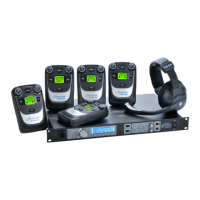
